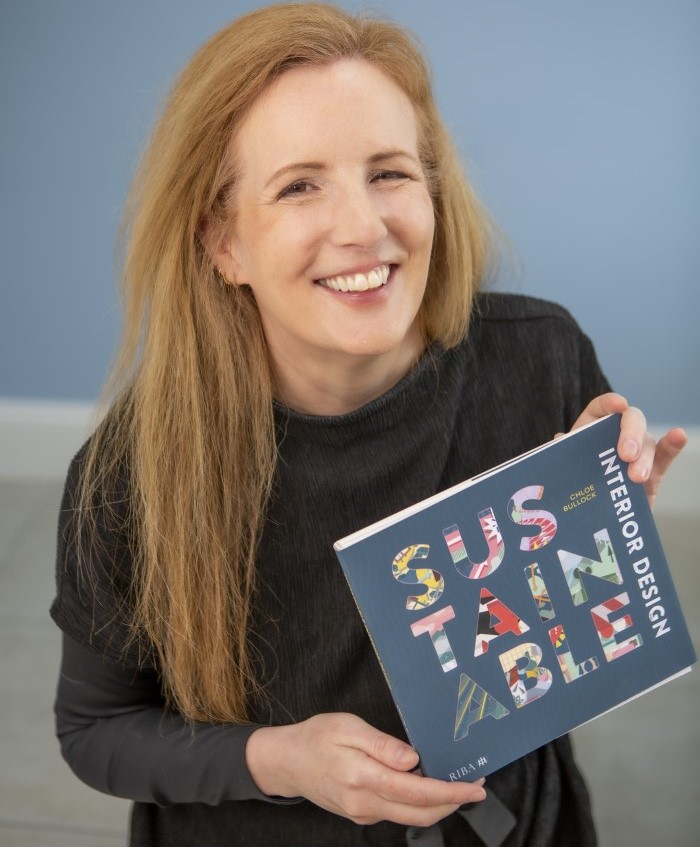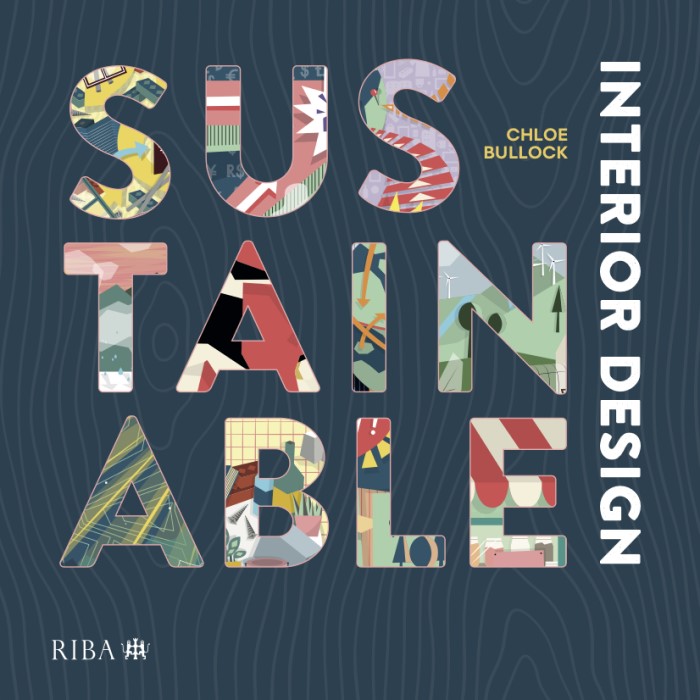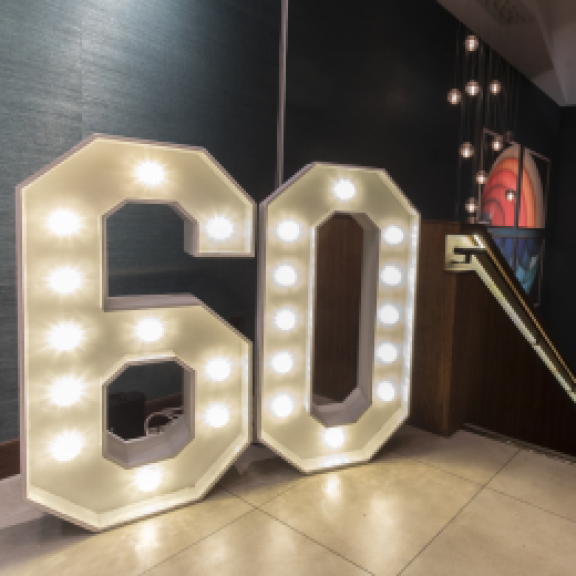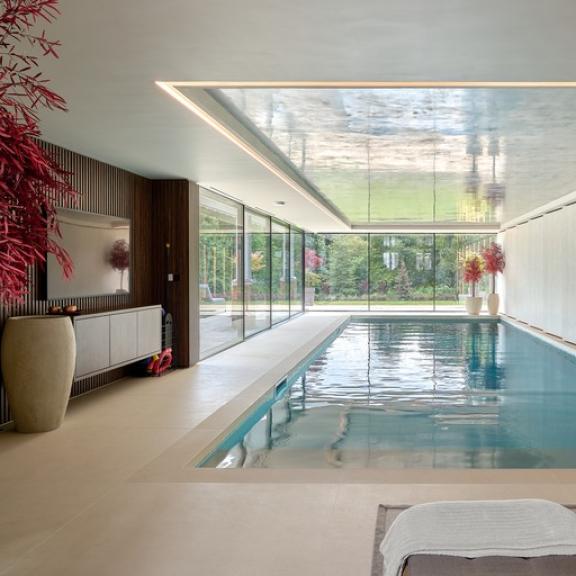Designer Q&A: Chloe Bullock
Chloe Bullock, founder of Materialise Interiors and an expert in sustainable design, talks to us about why sustainability is crucial and the work of the BIID Sustainability Committee

Chloe Bullock is a BIID Registered Interior Designer who founded her Brighton-based practice, Materialise Interiors, in 2005. Chloe learned about sustainable design and ethical business during the 10 years she spent working at the headquarters of Anita Roddick’s Body Shop, and brings these principles to her interior design practice.
Chloe considers the impact of her work on people and animals as well as the planet, and was the first UK designer to be certified in vegan design. She is one of the founding signatories of Interior Design Declares; a network of interior design practices, suppliers to the industry and educational establishments, which is committed to addressing the climate and biodiversity emergency. Chloe is also a member of the BIID Sustainability Committee.
We asked Chloe about sustainability in interior design, her own path to practising it, and how she would assess the profession’s progress in addressing the need to work sustainably.
Can you outline what sustainable interior design is?
It sounds complicated but in fact, sustainable design is one more challenge that I know my fellow designers are really good at adding to their problem-solving skills. I see it as an opportunity. Our industry uses such a broad palette of materials including stone, wood, metal, fibres and plastic which each have impact, are mostly not renewable or circular, and require energy-intensive extraction and production processes. Materials and products that we routinely specify use carbon, extraction, drilling, mining, natural resources, water, toxic chemicals and the exploitation of people and animals.
The interior designer’s designs and specifications have potential to harm people, planet and animals or they can support them to thrive. What a weight of responsibility, but also what an exciting opportunity to have a positive influence. We need to be inquisitive of the provenance of the things we specify. Our supply chains have been quite opaque for too long. We have clients wanting to know the impact and seek our guidance, along with things designers might pledge to (Interior Design Declares) or certifications we commit to (B Corp). Our projects may have planning conditions or certifications to fulfil, too. So I would describe sustainable interior design as being inquisitive to then make informed choices based on knowing the whole picture – the whole lifecycle of our work.
I know lots of us have been doing elements of sustainability naturally in our work: buying vintage items, reupholstering, designing for longevity and ensuring our briefs are met correctly so the projects live their longest life. The trouble is we need to do very much more; we are exceeding planetary boundaries. Biodiversity is perilously in decline and the construction industry plays a huge part in this. We literally depend on nature to keep ourselves and our businesses going. Sustainability needs to be the priority and we should be thinking regeneratively to ensure our work sits the most lightly on the planet, enhances biodiversity and will safely compost at the eventual end of life.

How did sustainable design come to be the ethos of your practice?
I was really fortunate to combine my love of design and my values in a role very early in my career. I was retail designer for the Body Shop HQ in the mid 1990s, working on projects globally – which included living in Melbourne – for 10 years. I learned so much about ethical business and sustainable design.
You are on the BIID Sustainability Committee. Could you talk a little about what the committee does as well as its future goals?
We are focussed on guiding our industry, our organisation and our members on sustainability. I have loved being a member and the more involved I get, the more I get from being a member.
As a committee we’ve delivered many things to help including the Sustainable Specifying Guide, launched September 2021, and currently being updated. We've devised the Sustainability Strategy for the overarching strategic plan for the organisation. There was a dedicated sustainability showcase in 2022, where I delivered a talk on next generation materials with Sadie Miller Maggs.
The committee members take part in panel discussions, writing articles on behalf of the BIID.
How well do you think the interior design profession is doing in focusing on sustainability? What should be next?
Sustainability just needs to become how we work now and be normalised. We need to stop only buying new and routinely stripping out spaces. We need to step away from new and creatively re-use what is already here and show off our design talents in doing so. We also need to look up and downstream from us and influence where we can to remove harm, chemicals, exploitation and waste.
What are the immediate steps a designer could take to make their designs more sustainable? And for the long term?
Ask for transparency. Use the supplier questionnaire from Interior Design Declares to question your suppliers. Download and simplify the form to suit, or use it when asking questions by phone.
Then use the BIID Sustainable Specifiying Guide to familiarise yourself with the issues and then align that with the client’s own values or brief. My book (see below) examines 11 approaches to sustainability to show what’s achievable and how it can be used to define project goals or for discussions with clients at briefing stage.
You were recognised as a compassionate designer in the 2023 PETA vegan homeware awards and you are the first designer in the UK to be VeganDesign.org certified. Can you explain a little about vegan design? How does it intersect with sustainable design?
It’s the cleanest form of sustainability. By avoiding animals you are not only avoiding cruelty you are also avoiding the resource used to raise them; carbon, methane, land and water use. In addition you are avoiding the use of chemical and fossil fuels as these ‘natural’ materials are not alway as natural as they may seem, and they certainly won’t regenerate safely. So often where animal welfare is an issue, so is the treatment of workers, and the planet. Instead, opting to work in the world of the next generation of bio-based, problem-solving and carbon-sequestering materials is so much more exciting and positive.

Can you tell us about your book, Sustainable Interior Design?
I greatly admire my fellow designers and I don’t believe they wish to cause harm through their work. I wanted to write the book I could see would help a busy designer – to demystify sustainability for them – and most importantly show it is also joyful and beautiful, too. This book has been two years in the making and I dearly hope it will inspire and help my industry.
Sustainable Interior Design by Chloe Bullock is published by RIBA on 1 May 2024.
Chloe offers peer to peer services to help fellow designers on their sustainability journey. She can help with formulating a sustainability policy, preparation for B Corp certification or even support members with sustainable specifications.
Take a look at our designer Q&As with Susie Rumbold, Sophie Ashby, Sue Timney, Staffan Tollgård, Jenny Weiss and Helen Bygraves, Kelly Hoppen, Shalini Misra, Katharine Pooley, Brian Woulfe, and Christopher Dezille.
Explore new resources from the BIID. Seeing a padlock? Just login or become a member to view.
View the highlights from our 60th anniversary party
We asked Anna Burles: What makes the perfect software?
Discover the smart home technology awards with Platinum Partner, CEDIA
Explore the latest, member-exclusive, templates designed to make your life easier.
University of Gloucestershire wins the BIID Student Design Challenge 2025.





